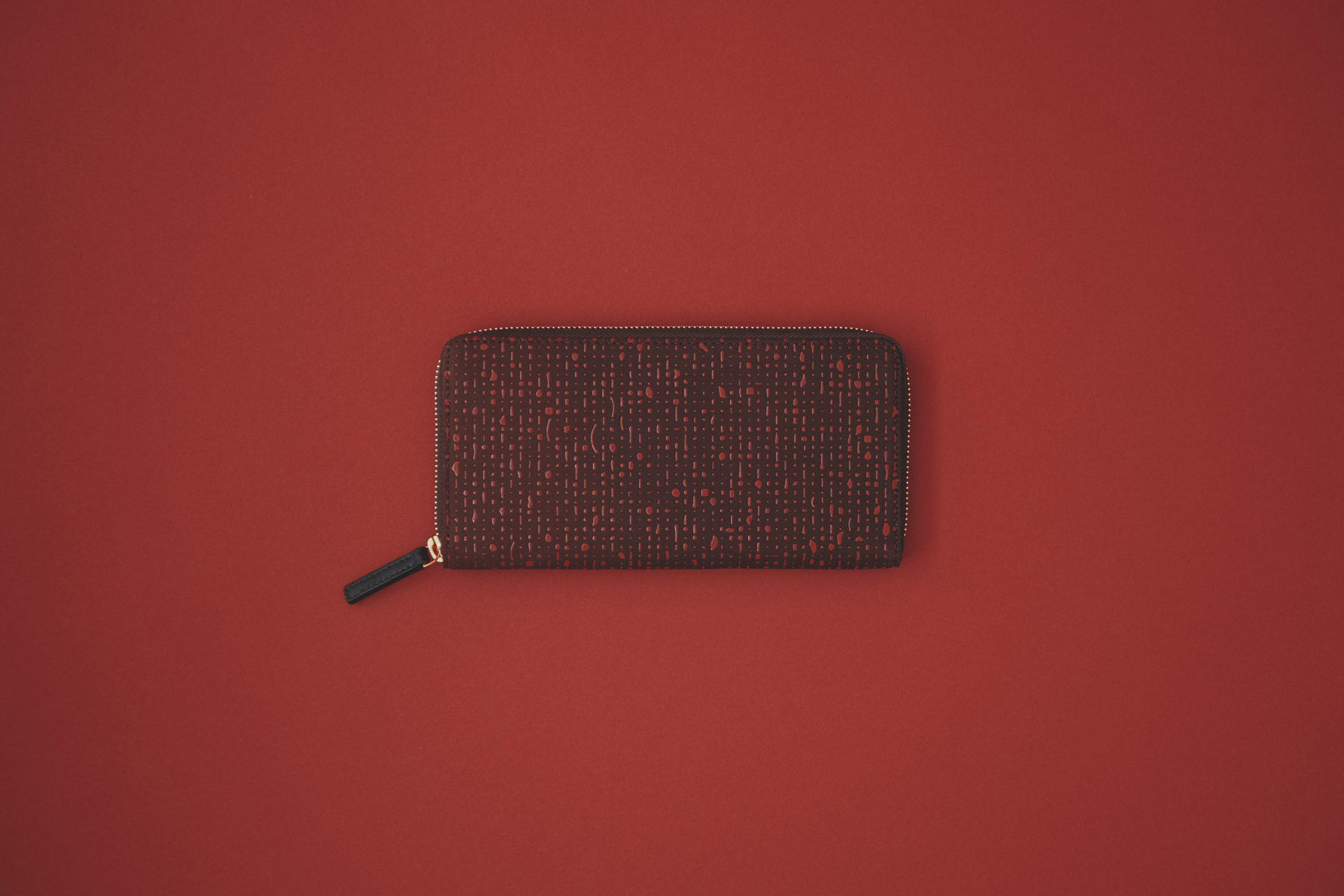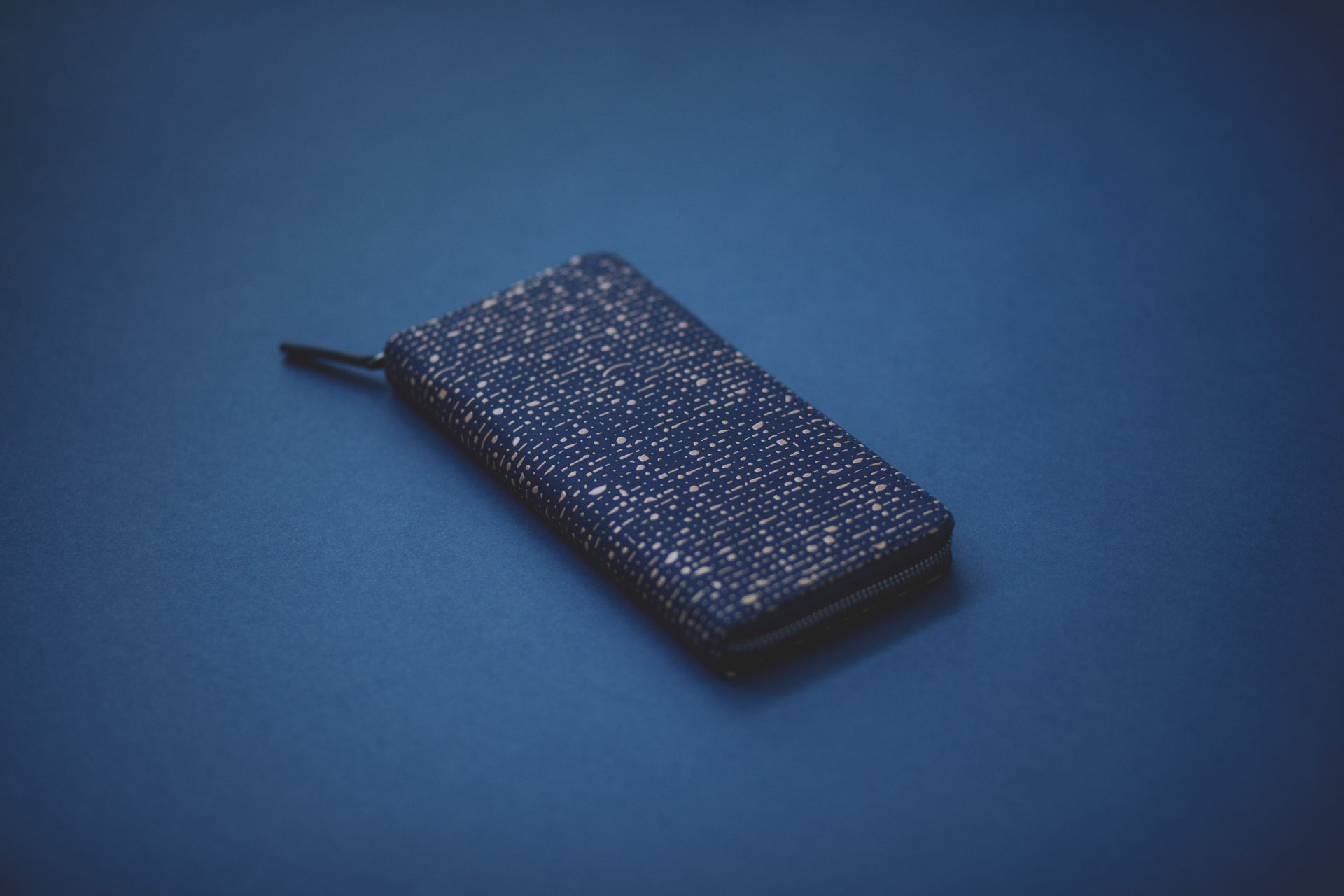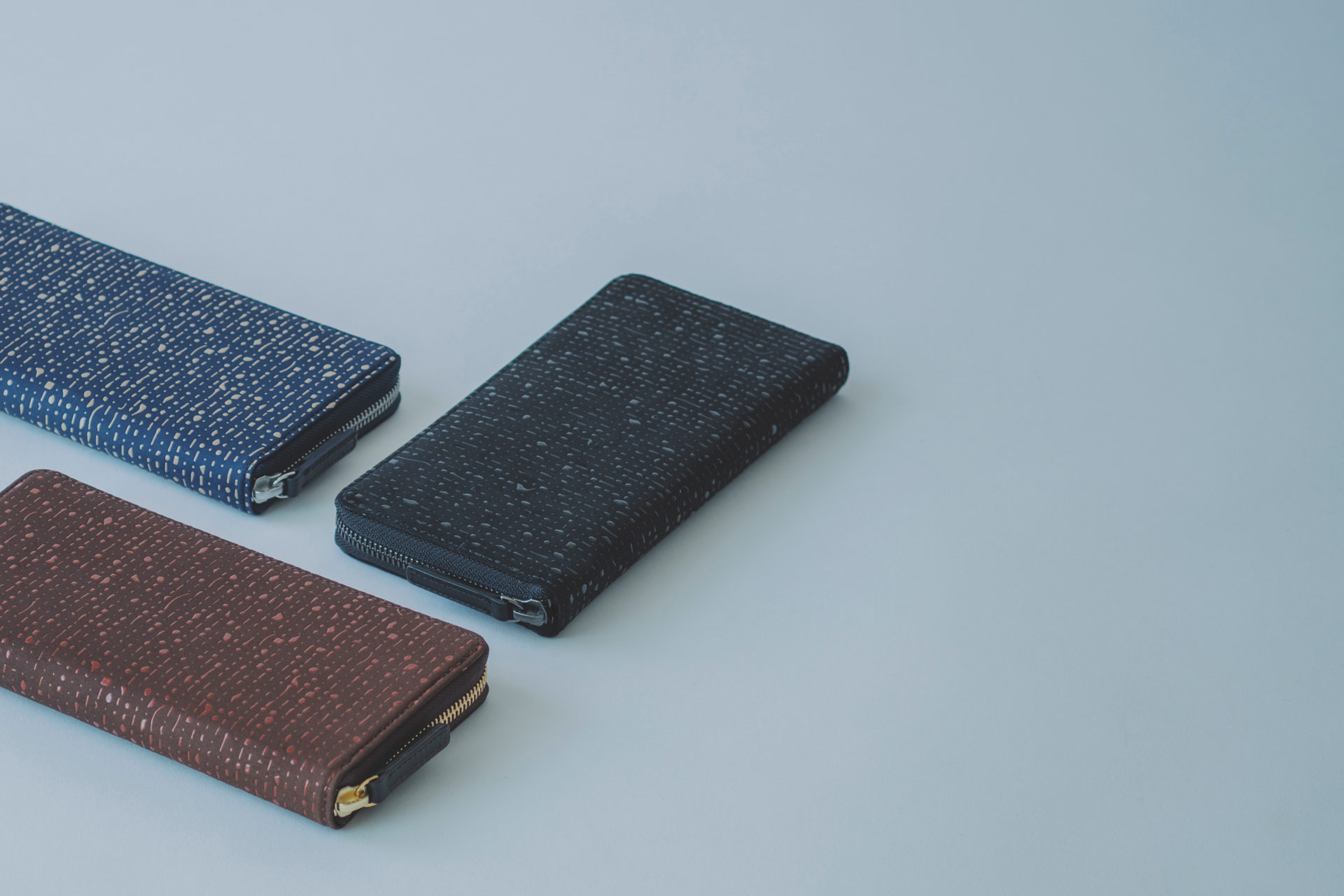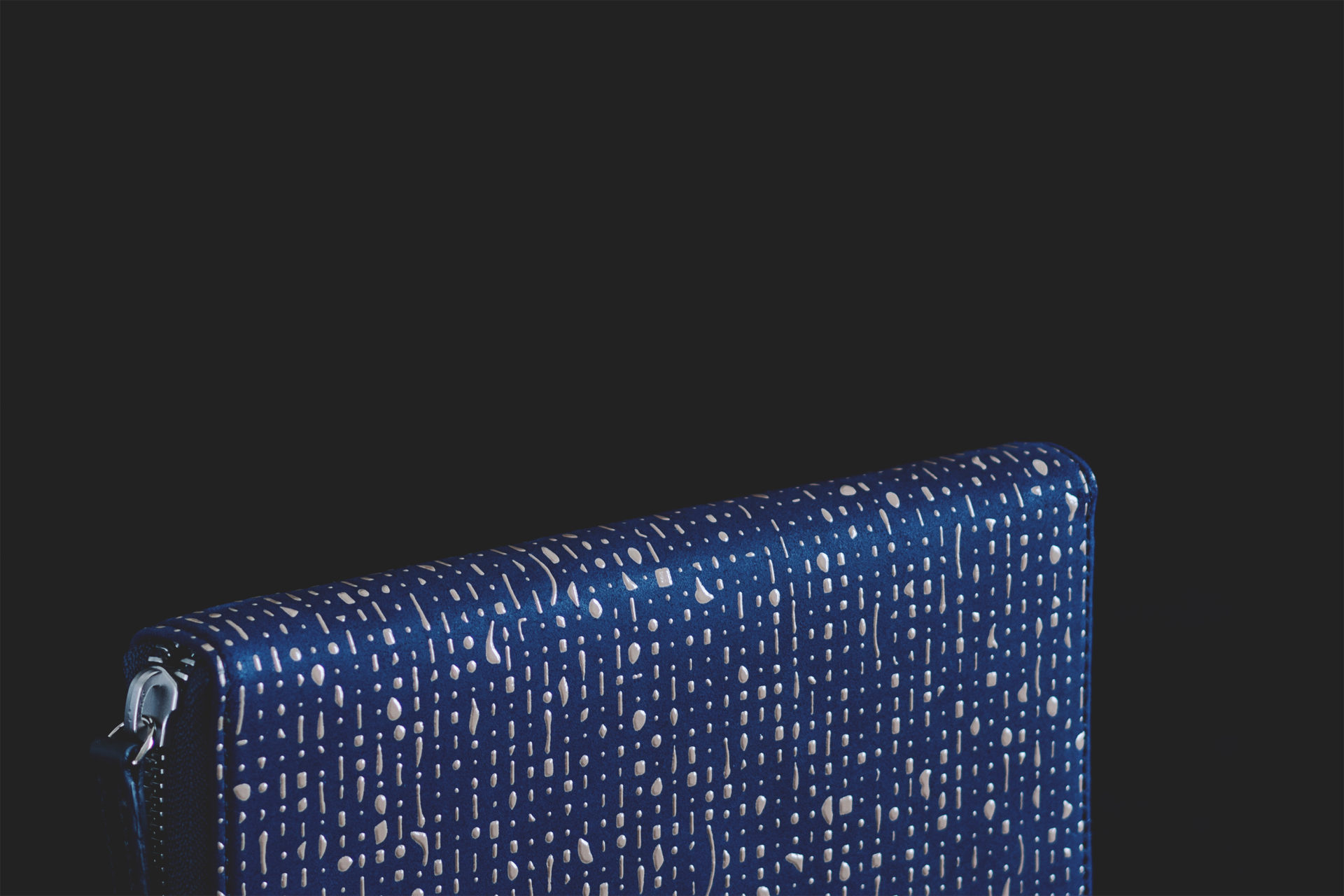Inspiring the pattern for INDEN-YA
–
During the Mid 16th Century, in the Muromachi period, these distinctive striped patterns first made their appearance in Japan in the form of textiles as the result of a blossoming trade with Southern Countries. Based on the Japanese Kanji for the island they became known as “Shima”. This became popular, as it was readily available to everyone and easy to design and use, its use expanded rapidly as there were no restrictions associated with more traditional patterns. Because of this the use of “Shima” stripes became widespread. I designed a new pattern based on my research into its origins in Japan and also on reconstructions from many Inden pattern fragments handed down to us from our fathers.
–
TSUMUGIJIMA represents the first ever collaboration with the ancient arts of INDEN-YA. Inden-ya is a well-known and very popular brand, widely known in Japan. It is a unique skill involving the application of lacquer over deerskin, which dates back 400 years. Find out more about the history of INDEN.
–
室町時代の頃、南蛮貿易で南の島々から伝わった筋目模様や格子模様の織物は「島物」(嶋物)と呼ばれ、いつしか「縞」の字があてられるようになりました。その後、江戸時代に庶民は贅沢で華美な服装を禁じられますが、それをかいくぐるように、自由にさまざまな縞が編み出され、粋を競うように愛好されました。その型にはまらない自由な創造精神にならい、印傳屋に受け継がれる九つの模様からひとつひとつの断片を切り取り、印伝の型紙や漆付けに見ることのできる手仕事の跡を感じられるよう縞状に配列。伝統の模様を紡ぎ、新しい縞をつくりました。
–















